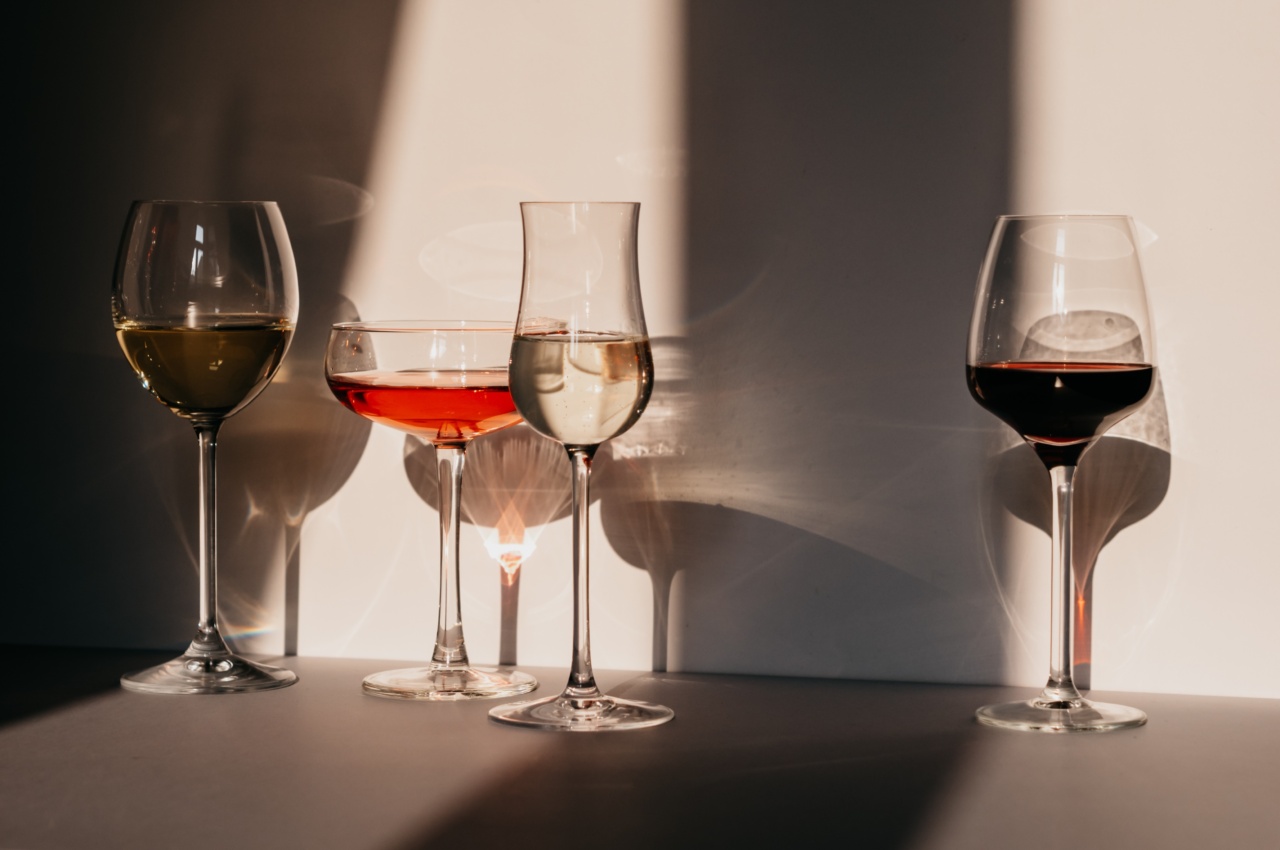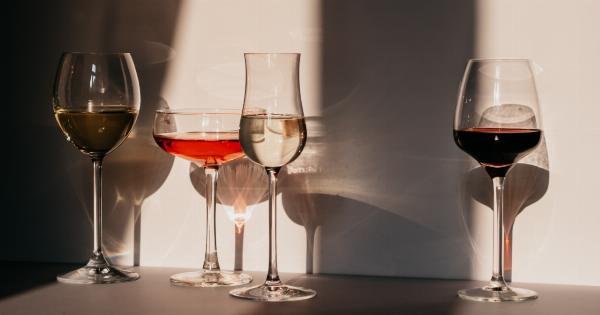The shape of a wine glass plays a crucial role in enhancing the tasting experience. While the quality of the wine itself is undoubtedly important, the shape of the glass can significantly impact how we perceive its aromas and flavors.
In this article, we will explore the various wine glass shapes and their influence on the tasting experience.
The Importance of Wine Glass Shape
Wine glasses are not merely vessels to hold wine; they are meticulously designed to enhance its sensory qualities.
The shape of a wine glass can affect the concentration and release of aromas, the delivery of the wine to different areas of the tongue, and even the overall drinking experience.
The Bowl Shape and Aroma Perception
The bowl is the central part of a wine glass and has a significant impact on aroma perception. A larger bowl allows for more surface area, allowing the wine to come into contact with more air and release its aromas.
This is particularly crucial for wines that are meant to be appreciated for their bouquet, such as reds and aged whites.
Red Wine Glasses
Red wine glasses typically have wider and rounder bowls compared to white wine glasses. The larger bowl allows these wines to breathe, promoting oxidation, and releasing volatile compounds that contribute to their complex aromas.
The wide opening also directs the wine to the tip of the tongue, where the taste buds for sweetness are found, enhancing the perception of fruity and sweet flavors.
White Wine Glasses
White wine glasses, on the other hand, have smaller and narrower bowls. This shape helps preserve the floral and delicate aromas often found in whites.
The narrower opening directs the wine to the sides and back of the tongue, where the taste buds for acidity and bitterness are located. This ensures a balanced tasting experience by emphasizing these elements without overpowering the flavor profile.
Sparkling Wine and Champagne Glasses
Sparkling wine and champagne glasses, commonly known as flute glasses, have elongated and narrow bowls.
The carbonation and effervescence of these wines are best preserved in this shape, providing a continuous stream of bubbles and enhancing the visual appeal. However, the narrow opening can limit the aroma perception, making them less suitable for wines valued for their aromatic complexity.
Glass Thickness and Temperature Control
Aside from the bowl shape, the thickness of a wine glass also affects the tasting experience. Thicker glasses can insulate the wine, helping to maintain its temperature for longer periods.
This is advantageous for white wines and champagnes that are typically enjoyed chilled. Thinner glasses, on the other hand, allow for a more delicate and elegant drinking experience, especially for fine red wines that should be served at slightly warmer temperatures.
Wine Glass Foot and Stability
The foot of a wine glass serves two primary purposes: stability and prevention of temperature transfer. A wide and solid foot provides balance and stability, reducing the risk of spills.
Additionally, it acts as an insulator, preventing the heat from the hand from transferring to the wine, particularly important for chilled white wines and Sparkling wines.
Crystal Glasses and Enhancing Aromas
Crystal wine glasses, known for their superior clarity and thinness, further enhance the tasting experience. The smooth surface minimizes interference with the wine’s aromas and flavors, allowing for a pure and unadulterated sensory experience.
The thinness of the glass also creates a sensation of elegance and delicacy, elevating the overall enjoyment of the wine.
Alternative Wine Glass Shapes
While traditional wine glass designs prevail, there are also alternative shapes that cater to specific wine styles. For example, the taller and narrower glasses used for riesling concentrate the floral and fruity aromas characteristic of the varietal.
Similarly, there are specialized glasses designed for specific red wine varieties, such as cabernet sauvignon or pinot noir, which aim to highlight their unique characteristics.
Cleaning and Storage Tips
Proper cleaning and storage of wine glasses are essential to maintain their quality and longevity. Hand-washing with mild detergent is recommended to preserve the delicate nature of the glasses.
Additionally, storing them upside down, individually, or hanging them in a glass rack can prevent dust buildup and minimize the risk of breakage.
Conclusion
The shape of a wine glass can significantly impact the tasting experience. From aroma perception to flavor enhancement, each wine style has its own ideal glass shape.
Taking the time to choose the right wine glass allows us to fully appreciate the nuances and complexities that different wines offer, enhancing our overall enjoyment and understanding of the beverage.































